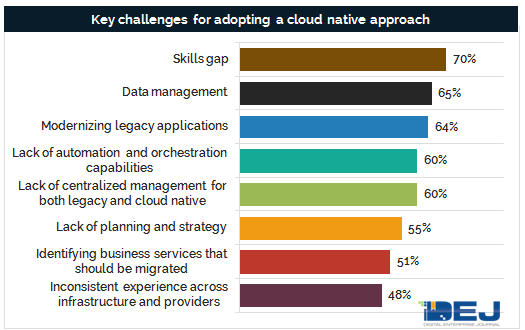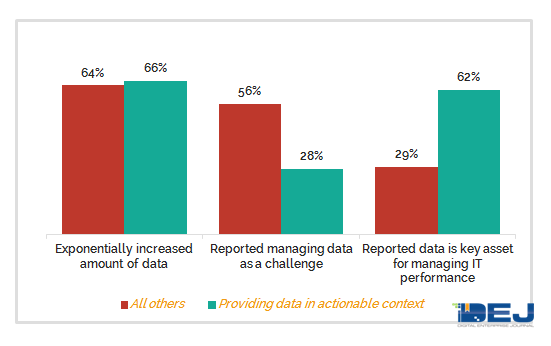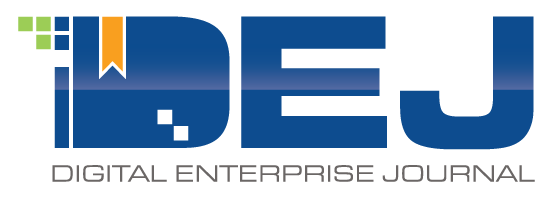Digital Enterprise Journal (DEJ) just published a new market report, Top 20 Emerging Vendors for Managing IT Performance in 2022. The report is derived from a state of the market study, 24 Key Areas Shaping IT Performance Markets in 2022, that was based on insights from more than 3,300 organizations. The twenty vendors included in this report are identified based on their alignment with key user requirements and ability to address management challenges as reported in the study.
Vendors profiled in this report are CAST AI, ChaosSearch, Checkly, Cortex, Cutover, D2iQ, Era Software, FireHydrant, Komodor, Login VSI, Nobl9, Observe, Pliant, Rafay Systems, Rollbar, Rookout, Selector, StackState, StormForge and vFunction.
The report and the vendor evaluation also helped identify some key trends that are expected to define these markets going forward. This DEJ’s Research Note analyzes six key areas that organizations should be focusing on in order to drive business benefits from technology deployments.
1 – Kubernetes and enabling cloud native
DEJ’s market study shows that Kubernetes management is the fastest growing use case over the last two years (76% increase). The research shows that organizations are understanding that modernization and adopting a cloud native approach is not optional as 31% and 24% reported that their competitive position declined over the last 12 months due to: 1) Inability to create differentiating customer experiences; and 2) Being slow to the market, respectively. However, the research also shows that adopting and managing Kubernetes comes with a plethora of new challenges that most of them don’t have skills or tools to deal with.
The speed at which microservices and container-based architectures entered and impacted the enterprise cannot even be compared with the early days of cloud adoption or any other IT technology since CERN made Internet generally available in 1993 (which also tells us that “the next big thing”, whatever that might be, will have even faster and stronger impact). Enabling organizations to maximize the value of Kubernetes is creating a market for management solutions where the rules are completely different: 1) ineffectiveness is impacting the business at its core and you can no longer masque the failures by showing some reports where all the lights are green; 2) solutions that are not built for these types of environments have very little chance to remain relevant.
Several of the top emerging vendors built their solutions for addressing key requirements around Kubernetes management and cloud native adoption, which contributed to them receiving the highest evaluation scores in areas such as Modernizing IT Ops, Optimization, enabling unique user experiences and others. The key words here are “built for”. Vendors such as CAST AI, D2iQ, Komodor, Rafay Systems and StormForge excel in these types of environments, as they are addressing some of the key challenges – from complexity and skills gap of Kubernetes adoption, Day 2 operations, security requirements, unique challenges of Kubernetes troubleshooting (provided by Komodor) to automating the optimization of resource utilization for a proactive assurance of application performance.

Additionally, vFunction provides a unique approach for addressing the #1 challenge of adopting a cloud native approach – skills gap (reported by 70% of organizations), while Era Software and Observe are effectively addressing the #2 challenge, data management, by providing strong Observability capabilities.
Lastly, most of the vendors included provide strong capabilities for managing the performance of digital services in cloud native environments. Rookout’s offerings are enabling a unique approach to cloud native debugging, while Checkly’s solution is effectively addressing one of the key “blind spots” in application delivery chain – API endpoints performance.
2 – New meaning and importance of “continuous”
Concepts such as CI and CD made the term “continuous” popular several years ago, for a good reason. Organizations started to realize how quickly customer expectations for engagement and experience are changing and started focusing on continuously innovating and doing so quickly. However, we have gotten to the point where “finding the balance between release velocity and reliability” is being constantly reported by 65-70% of organizations, in all of DEJ’s research, as a key challenge. Some trends that made “continuous” important back then are now giving the term a new meaning and increased significance. Continuous code improvement (provided by Rollbar), continuous learning to improve incident resolution (FireHydrant), continuous resource and performance optimization (CAST AI, StormForge), continuously adapting to the impact of change (login VSI, StackState), enabling continuous modernization (vFunction) are just some of the areas that are set to become a norm for forward-thinking organizations.
Finding the right balance between release velocity and reliability requires additional capabilities and Nobl9 helps organizations to address this area by bringing together monitoring data and helping organizations understand their performance in a business context via SLOs-as-code capability. Additionally, Rollbar’s capabilities allow organizations to detect potential issues in real-time and automate the process for addressing errors in an intelligent manner.
3 – A wavy road of adopting automation becoming more straight
DEJ’s 2020 study on IT Transformation showed a 37% increase in manual tasks that are “not humanly possible to complete”. That lead to an emergence of approaches that promised that ML and AI-enabled magic will solve their key problems end-to-end. Organizations learned their lesson and this study shows
- 56% of organizations reported a quality of data as the key obstacle for automating more tasks
- 61% more organizations reported “contextualization, analysis and diagnostics” as the key AIOps value areas, as compared to all other AIOps capabilities
- 74% organizations are looking for more control and transparency before automating incident resolution
The study shows automation as a key enabler, but both user organizations and vendor approaches have become smarter and more mature in using automating capabilities to provide the business value. From picking the tasks and use cases, finding the right role in improving workflows to minimizing the risk, intelligent automation and orchestration are right on the top of the list of key user requirements. The study shows
- 65% of organizations are looking to automate resource allocation to best meet their workload needs
- 45% of organizations are looking to deploy capabilities for resilience automation
- 57% of organizations reported automating cloud infrastructure provisioning as the key value area
- 57% of organizations see automation as the key enabler for closing a modernization skills gap for IT Operations
- 67% and 66% reported orchestration and context-based automation, respectively, as key enablers for managing complexity
Many of the top emerging vendors are providing strong capabilities in this area. Pliant’s orchestration platform enables organizations to significantly improve their efficiencies by automating workflows and tasks, integrating data and processes and synchronizing applications and infrastructure, while Cutover’s dynamic runbooks enable organizations to orchestrate key workflows and achieve operational resilience. Additionally, Selector takes a data-centric approach to automation that shows a clear path to a problem solution but gives users power and control to decide if they want to automate the remediation process.
4 – Data capabilities
DEJ’s research shows that when it comes to data management there are two groups of organizations. Those that are reporting data growth as a challenge and organizations that see it as an opportunity or advantage. What they all have in common is reporting a lack of capabilities for managing and analyzing data as a key challenge for using technology as a source of competitive advantage. The research shows exponential growth in a sheer amount of data that organizations are collecting, and it also shows a continuous increase in the number of organizations that lack data needed to solve key problems. The report identifies three areas where organizations are focusing on: 1) delivering data in an actionable context (enabled by ChaosSearch; 2) collecting, processing and storing all the data needed in a scalable and cost-effective way (Era Software); 3) identifying data gaps and making educated decisions about closing them (Observe).

5- People – workflows, experience, enablement
One of the key findings of the study is a 2.5x increase in the number of organizations that are reporting that finding and retaining talent has become more difficult. The study also shows the impact of lack of talent for modernization on key business goals. However, the study found that this issue goes way beyond just the fact that developers and engineers with the right skill sets are in high demand and, therefore, empowered to pick and choose (and do so often) environments that are a better fit for them. The research identified several areas that show the importance of deploying the right types of capabilities around this issue:
- 70% of organizations reported workflows and a lack of collaboration capabilities as key reasons for developer frustration
- 66% reported a lack of visibility into employee experience and engagement as a key challenge for deploying new technologies
- 68% of IT’s time is spent on tasks that do not contribute to business outcomes
- 65% of organizations do not calculate technical debt
This list could go on, as there are numerous research findings that support the fact that skills gap in the enterprise go beyond imbalance between supply and demand for certain skill sets. Most of the top 20 emerging vendors recognized these challenges and are providing key capabilities needed for addressing top user requirements.

Cortex provides strong capabilities for improving effectiveness of engineering teams and enabling them to focus on creating business value. Also, Login VSI enables proactive management of employee experience through its platform for digital workspace reliability, while Checkly’s solution for proactively monitoring customer experience addresses some of the key challenges that are driving developers’ frustrations. Additionally, Era Software, Komodor, Rookout, FireHydrant, Observe, Pliant, Rookout and Selector enable organizations to reduce the time that their high value employees are spending on work that does not contribute to business goals.
6 – Outcomes
The top 20 emerging vendors come from different technology backgrounds, but they all have one thing in common – it is easy to understand where they can help user organizations. The majority of these solutions don’t squarely fit into any well defined technology categories, which could be confusing to some, but they are focused on what is most important – addressing key challenges and driving top business outcomes.













